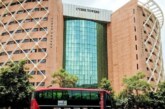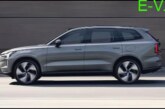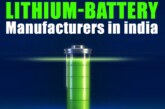
Chinese ultracapacitor bus impact
It’s no surprise that China leads Automotive electrification. Most western countries use the car as primary transport but in China automobiles of all categories from bicycle to the bus are essential due to the large population which needs everyday transport. So, a bus is also a priority and the most impressive fact is that China has the highest number of electric buses in operation. Chinese ambition to be a global manufacturer has made and deployed the electric bus before any other country. Let’s take a look at the Chinese Ultracapacitor bus impact and its experimental outcome.

In-depth analysis
With alarming pollution levels and the government’s efforts to control them, China encouraged manufacturers to develop EVs earlier than other nations. Bus transport, which moves the majority urban population in china is also electrified. Lithium-ion battery packs around 2010 were not practical for Chinese urban transport because charging requires hours of time. With the addition of ultracapacitors to battery packs and the installation of overhead charge outputs at bus stops, a reliable electric bus network took over a few Chinese cities.
Technical overview
Ultracapacitors have low resistance when compared to batteries which make them charge and discharge quick. While lithium batteries are not as quick as Ultracapacitor in charge, but they are slow in a discharge too. By combining Ultracapacitors and lithium batteries fast charge and slow discharge are practical and applicable for the bus. These battery packs are available only in buses which will never exceed charging network.
When a bus reaches it’s stop a pantograph on top connects with overhead charge output. Energy is transferred from output to bus storage while the exchange of passengers at the bus stop. Within a few seconds, the powerpack takes a small amount of power and pantograph retracts back. The process repeats at every stop and the bus is capable to travel next stops without charge. A backup battery of 50km range is also available in this bus. Regenerative power is an additional advantage with Ultracapacitor because regenerative power is not constant and its storage must be quick.
Conclusion
The ultracapacitor bus network is available in China a decade ago which projected a hope to develop a practical fast charge and slow discharge batteries. The bus network also led the movement to develop setup such networks in cities with frequent bus usage.
Related: Electric bus market, growth & progression
If you are an EV manufacturer or EV Dealer or EV Supporter who want to share news related to electric vehicles on our website, please send an email to crm@electricvehicles.in
For the latest electric vehicles news, follow electricvehicles.in on Twitter,Instagram,Facebook and our YouTube Channels English, Hindi, Telugu and Tamil







